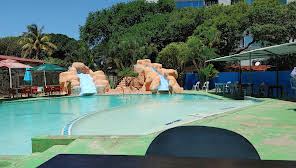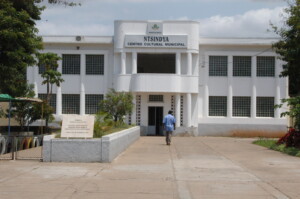Maputo City is the capital city of Mozambique and located at the bottom of the country. In it’s center is a bustling market where all kinds of goods can be bought. Many building design are from the Art Deco era and an heritage from Portuguese colonization. Maputo has top modern restaurants, cafés, shopping centers and luxury buildings as well as simple township neighborhoods just next to each other. Kaya Kwanga Residencial and other venues we will visit are situated in a calm middle class area just south of the city center. View on map
Maputo Airport is situated just outside the center of Maputo. We will pick you up at the airport and take to FKaya Kwanga Residencial which should take 20-40 minutes depending on traffic. View on map
Kaya Kwanga is one of the oldest hotel complexes in Maputo. Well located along the Marginal and spread across a vast garden, it offers small bungalows that have always been favored by long-term residents. https://www.google.com/maps/place/Residencial+Kaya+Kwanga/@-25.9526926,32.6112613,15z/data=!4m2!3m1!1s0x0:0xc6610114dc9da64c?sa=X&ved=2ahUKEwiSs7Txh_GDAxVuV0EAHRAzBTYQ_BJ6BAgKEAA

Ponta D’Ouro (in English meaning “tip of gold”, in reference to an existing cape at the southern part of the beach) is a town in the extreme south of Mozambique, lying on the Mozambique Channel south of Maputo and just north of the border with South Africa. It is known for its beach, for its dolphins and for its offshore diving and deep-sea fishing. We will be staying at at Motel do Mar, a lodge just by the beach where we will sleeping in small houses.

Polana Caniço Neighbourhood and Market is situated in the neighbourhood Polana Caniço. Caniço means “straw” and the suburb got its name because of all the straw houses in the past. Today most houses are build out of concrete blocks close to each other with narrow alleyways where the kids run around, play or dance. The Market we will go through has everything you can imagine from vegetables, traditional medicines, African fabrics, kapulanas, school uniforms and telephone adaptors. Judite Novela will take us through the market telling us stories and invite us to try local foods. Polana Caniço is also where we will visit the Hodi Yoth Programme Hodi Afro Swing Kids. View on map

Centro Cultural Municipal Ntsindya
”The center, called earlier ”Centro Associativo dos Negros da Colónia de Moçambique”, was a cradle of nationalist ideas and struggle for independence. The first president of Frelimo, Eduardo Mondlane, founded NESAM (Núcleo dos Estudantes Secundários Africanos de Moçambique) within the center. NESAM was a group of intellectuals resisting the colonial power. Its leaders included Mondlane, Joaquim Chissano, and Armando Guebuza among others.
The activities were considered disruptive to the time’s political and social order, and the center was closed down in 1965 by police forces. During the subsequent years, the building served as a health center, as a home for the Mozambican authors’ society, and finally, became a warehouse for the shoe merchant ”Rei do Chinelo”.
Citizens were infuriated by the degradation of the historically significant site. The center was at last re-opened in 2006 by the President of the Republic and designated municipal cultural center. It was named ”Ntsindya”, which means the “center of attention” in Ronga.”

FEIMA – Feira de artesanato, flores e gastronomia de Maputo – Art Market is an Art Market is situated not long from Fátimas. Here you can buy hand made art craft such as wooden statues, bags, clothes, boutiques and paintings. This is a good place to buy memories, but make sure to negotiate the price! You will have time to go to the market Sunday morning or if you stay some extra days. View on map
